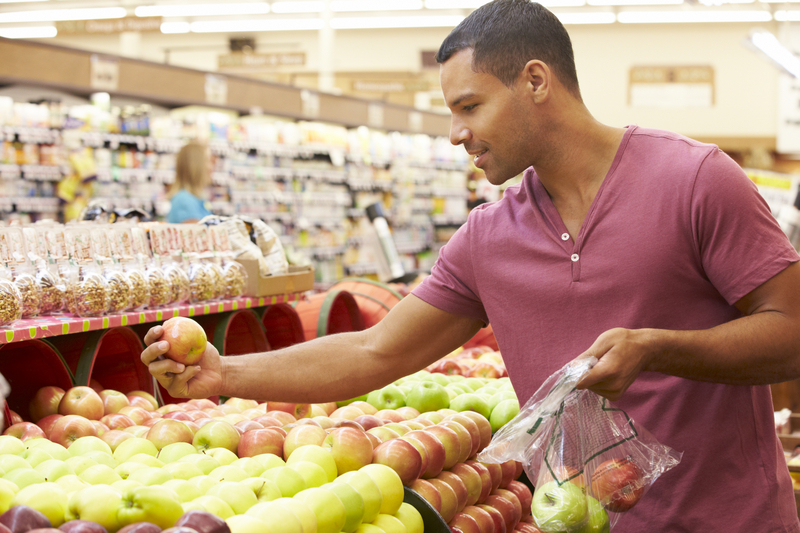When Russia invaded Ukraine, which is one of the world’s breadbasket countries, a bright light was shone on the global food supply chain. The Economist notes, “Vladimir Putin’s attempt at grain blackmail highlights a wider problem.”[1] That problem, according to the magazine, is men with guns. The magazine explains, “The global food supply is vulnerable to men with guns. Indeed, of the 828m people who do not get enough food, nearly 60% live in countries racked by conflict. Armed violence is the single greatest obstacle to ending hunger, says the UN’s World Food Program.” Of course, armed violence isn’t the only challenge facing global food security. Science writer Max G. Levy explains, “Right now, 325 million people are acutely hungry. 35 million Americans don’t know where their next meal will come from. The world’s food systems are uneven, fragile, and only becoming more fragile with the climate crisis.”[2] Challenges ranging from climate change to violence means the future of global food security is very much up in the air.
Food Security in a Volatile World
Even before Russia’s invasion of Ukraine, Patrick Webb, the Alexander McFarlane Professor of Nutrition at the Friedman School of Nutrition Science and Policy at Tufts University, observed, “From the mid-2000s to around 2014, there was a period where we essentially didn’t have any famine in the world. We got very good at growing more food, and globalization allowed that food to move around the world. Poverty was falling, lifespans increasing. Then suddenly, wham! In the past half-decade, armed conflicts escalated across the world: Syria, Ethiopia, South Sudan, Nigeria, Myanmar. And climate change impacts have been getting dramatically worse, such as extreme droughts, floods, and fires, particularly in low-income countries that can cope the least. COVID hasn’t helped — it’s accelerated the increase in hungry people and in undernutrition. … This has forced everyone to recognize the fragility of global food systems.”[3]
People’s minds naturally turn to the agricultural sector when the topic of food security is raised. Fact of the matter is, however, that food security requires the involvement of supply-side stakeholders of all stripes. In addition to those who grow, raise, and produce our food, individuals and organizations involved in how that food is stored, processed, packaged, transported, and sold must also be involved. Governments, at all levels, must also be involved. Ertharin Cousin, managing director of Food Systems for the Future, explains, “We need to bring all of government together to ensure that we’re addressing access to more nutritious food by all Americans.”[4] At the consumer level, everyone is a stakeholder. That’s why Cousin insists, “We need to bring all of society together to address these issues.”
Doing nothing is not an option. With the global population having just surpassed 8 billion people on its way to 9 billion people by mid-century, food security needs to be a top priority. According to journalist Sumedha Tripathi, food security is now a consideration in how close the world is edging to “Doomsday.” She writes, “Slowly, all those people who didn’t believe in the climate crisis and climate change are learning how it may really affect us and our future generations. The weather is getting hotter [and] icebergs are melting. … This means we are heading towards a food crisis. [Scientists] have launched a doomsday countdown.”[5] The doomsday countdown to which she refers is better known as the Doomsday Clock maintained by the Bulletin of the Atomic Scientists. The group was founded by Albert Einstein and students from the University of Chicago in 1945, primarily to warn how close the world appeared to global nuclear conflict. Today, many more calculations are taken into account by the Bulletin’s science and security board in consultation with its board of sponsors, which includes 13 Nobel laureates.[6]
The Way Ahead
I’m an optimist. Having said that, I agree that steps need to be taken to improve global food security. Analysts from the Boston Consulting Group (BSG) ask, “What might the global food system look like in 5, 10, or 15 years?”[7] They write, “Various futures are imaginable. Perhaps Africa will have achieved far more food sovereignty. Protectionism might cause food prices to rise dramatically. A few Global North countries might dominate agricultural trade, displacing smallholder farmers elsewhere. Or — just maybe — the world might come together, collaborating to slow climate change, boost global agricultural trade, and relieve hunger among the world’s most vulnerable populations.” It’s that “just maybe” scenario (which they call the “Coordinated Step Forward” scenario) the world needs.
As they note, however, other futures are possible. In addition to the “Coordinated Step Forward” scenario, they propose three other scenarios, which they call: “Uneven Progress,” “The Rise of Africa,” and “Every Country for Itself.” They note each scenario “offers a distinct vision of the middle-term future.” Those scenarios are described briefly below. For a more detailed discussion of the scenarios, read the entire BCG article.
Scenario 1: Uneven Progress. “[In this scenario,] Global coordination stalls, but a few breakout nations among high-income countries (HICs) in the Global North lead a policy-driven development agenda and promote the uptake of existing climate-smart technologies. Meanwhile, inequity worsens as extreme weather decimates the Global South, food availability declines, and prices increase unevenly across the world. … Global supply chains become concentrated and dominated by countries such as Canada and the Nordics that build on their low-carbon exports. Agricultural technology remains focused on industrial and contract farming, displacing smallholder farmers around the world.”
Scenario 2. The Rise of Africa. “In this scenario, Africa accelerates its agriculture potential through unprecedented South-South cooperation, technology transfers, and private sector investments, especially from countries such as India and China. Overall, food availability and productivity increase, prices drop, and hunger declines, but the benefits are not distributed evenly across the continent. Moreover, intensified agriculture leads to backsliding on climate goals. This scenario imagines a world in which reduced global trade results in more powerful regional trading blocs. Shorter food staple supply chains lead to intensified agriculture, notably in Africa, thanks in part to rapid adoption of technological advances in climate-smart agricultural inputs. At the same time, however, increased protein consumption on the continent and a lack of international consensus on climate policy cause greenhouse gas (GHG) emissions to increase there and elsewhere.”
Scenario 3. Every Country for Itself. “[In this scenario,] a self-sufficiency narrative takes root globally, leading to significant reductions in global agricultural trade. By necessity, alternative foods such as millet replace global commodities. However, limited climate action leads to a point of no return. Resource-rich countries benefit; others suffer. In this scenario, a significant increase in protectionism has wide-reaching negative effects. Food costs rise and availability declines as global trade collapses by 20%. Supply chains are disrupted and profits in private sector agricultural decline. The failure to stem global warming leads to extreme weather events and further reductions in agricultural yields. Countries rush to protect their populations, but inequality and social unrest increases.”
Scenario 4. Coordinated Step Forward. “[In this scenario,] greater global coordination in climate policy and agriculture gains momentum. This promotes adoption of existing climate-friendly innovations. The private sector is pressured to follow along, especially benefitting companies that made early strategic bets on green ventures. In this future, collective action yields to numerous benefits. Global trade rises, and supply chains grow more resilient and transparent, significantly reducing food waste and loss. Demand shifts toward more nutritious, environmentally conscious foods such as plant-based proteins. A global consensus emerges on slowing global warming, leading to investment in climate-friendly and humane agricultural practices, including better protection of arable land and decreased GHG emissions.”
BCG analysts go to recommend actions that can be taken by the private sector, the social sector, and the public sector. They then conclude, “The probability that any of the scenarios we’ve imagined will come to pass precisely as described is quite small. But that doesn’t detract from their value to stakeholders looking for guidance in preparing for the global food system’s highly uncertain future, whatever it looks like.”
Concluding Thoughts
Professor Webb concludes, “We need to rethink what we produce and how, how that food is stored and transported, how to rebalance prices and consumer demand between so-called empty calories and nutritious foods and products. Transforming food systems that were designed to tackle problems of the last century into ones that meet 21st-century needs will be key. This will reduce healthcare costs, reduce emissions, limit the pressures on wild areas, and enhance the human growth, education, and productivity of future generations. Food lies at the core of many of the world’s problems. We need to resolve hunger to resolve the underlying dissatisfaction that fuels many major conflicts. But feeding people is not enough; we must nourish them. Innovating in the food space will help address planetary challenges while locally producing millions of jobs. There’s a major opportunity here.”
Just because the benefits of increased food security are obvious doesn’t mean stakeholders will act to create a future that embraces those benefits. BCG analysts observe, “As important as it is for stakeholders in the public, private, and social sectors to prepare for the wide range of potential contingencies indicated by the four scenarios, it is even more critical for them to begin taking actions that are likely to pay off under any circumstances, with little or no foreseeable downside. These include various activities broadly designed to reduce the impact of future food crises, mitigate global warming, promote global trade, increase global equity, and improve supply chain resilience.”
Footnotes
[1] Staff, “How men with guns aggravate global hunger,” The Economist, 2 November 2022.
[2] Max G. Levy, “The Sustainable Future of Food Must Bring Everyone to the Table,” Wired, 28 September 2022.
[3] Karen Shih, “What Will It Take to Nourish Everyone on the Planet?” News Wise, 1 December 2021.
[4] Levy, op. cit.
[5] Sumedha Tripathi, “Is The End Near? Scientists Warn That The World Will Run Out Of Food In 27 Years,” India Times, 24 April 2022.
[6] KC Archana, “Inching Closer To ‘The End’? 2021’s ‘Doomsday Clock’ Ominously Stuck At 100 Seconds Away From Midnight,” India Times, 31 January 2021.
[7] Shalini Unnikrishnan, Shruthi Baskaran-Makanju, Alan Iny, Chris Mitchell, Matt Westerlund, and Torsten Kurth, “Four Futures for the Global Food System,” Boston Consulting Group, 7 November 2022.





